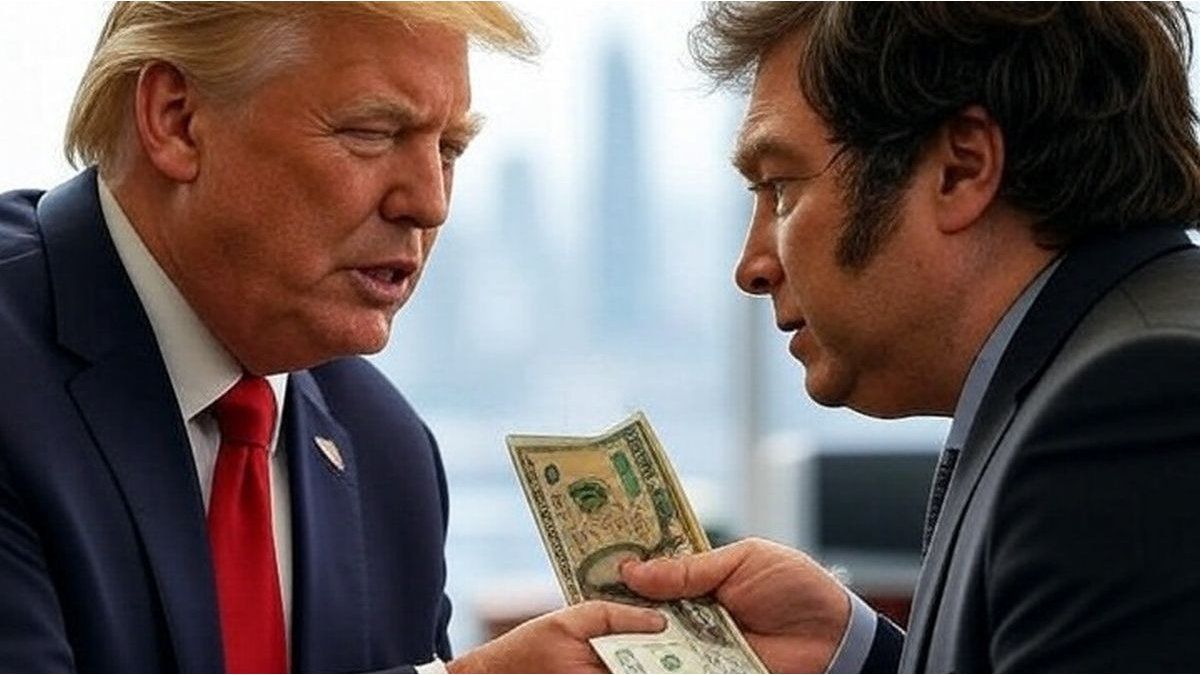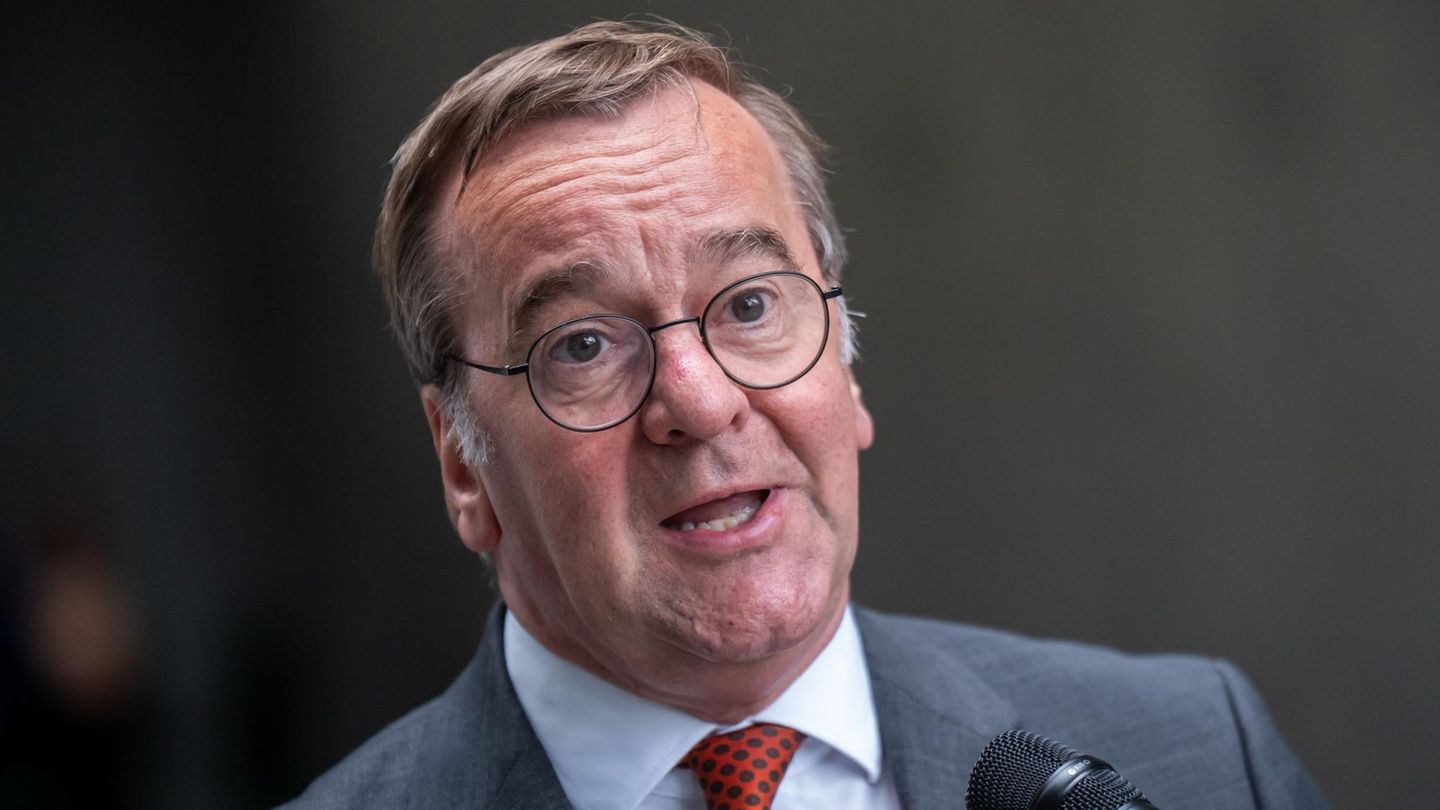Trump, for his part, sees Milei not only as an ideological ally, but as a tactical partner in his crusade against Chinese expansion in Latin America.
Trade tensions between the US and China have escalated to new tariffs and technological blockades, while the war in Ukraine and disputes over control of sea routes are redrawing global supply chains. In this scenario, and before Trump’s eyes, Argentina emerges as a critical node, with its vast reserves of lithium, copper and rare earths, which are the key to the energy transition.
The Trump administration, aware that Chinese dominance in these resources could mortgage American technological supremacy, has opted for direct intervention that goes beyond rhetoric. The financial rescue already underway, materialized in a currency exchange for US$20,000 million that will inject immediate liquidity to the Central Bank, is for the United States an “investment in regional stability.”
Lost dollars Nodus Bank
What will happen to the dollar after the elections?
In fact, it not only relieves exchange rate pressure, but paves the way for a new program with the IMFstill in development but with the explicit endorsement of Washington.
Today’s meeting, preceded by a working lunch in the Cabinet Room and a Medal of Freedom ceremonywill serve to polish the details and project an image of unbreakable unity.
But This pact is not a blank check. It implies concessions: from the reorientation of commercial alliances to the forging of internal consensus that guarantees the viability of structural reforms.. In Trump’s view, Milei needs this support to shore up his re-election in 2027 and neutralize the attacks of a fragmented opposition. The American leader is betting on a strengthened Milei as a counterweight to the influence of Beijing, which has woven a network of regional projects. They could be recognized at least five nodal keys of the agreement.
1- Cooling of relations with China
The central axis of the pact lies in a clear and profound geopolitical reorientation: Argentina undertakes to progressively distance itself from Beijing, starting with the exhaustive review and gradual paralysis of key initiatives that have marked the Chinese presence in the national territory during the last decade. This includes not only emblematic projects such as hydroelectric dams in Santa Cruz, the satellites of the SAOCOM program financed by the Asian regime or the databases and processing centers in the north of the country, but also cooperation agreements in mining and renewable energy who have injected billions of dollars. Washington thinks this is at the cost of a “strategic dependence” that it describes as “unsustainable.”
In a later phase, but with deadlines probably defined in the memorandum of understanding to be signed today, the total replacement of the swap current exchange rate of US$18 billion with the People’s Bank of China—a mechanism that has been vital for the BCRA’s reserves but is now perceived as a back door for Beijing’s economic influence.
2- Direct financial stabilization from the US treasury
As an immediate and tangible counterpart, the US will activate aid mechanisms that inject liquidity and contain exchange volatilitiesthrough direct interventions in the markets and a stabilization fund that protects the Government’s economic and financial plan from internal and external turbulence.
The pillar of this assistance is an exchange swap for US$20,000 millionwhich will materialize in the coming days and which will not only alleviate the immediate pressure on the Central Bank’s net reserves, but also will increase the cushion of foreign currency available to guarantee the next debt maturitiesdefend the exchange rate of the new equilibrium level that is defined after October 26 and finance essential imports. It is a kind of “shield” against global shocks such as increases in Fed interest rates that could come in the (for now distant) future or fluctuations in commodity prices.
For Milei, this injection not only represents a balm for the balance of payments crisis, but also a kind of political endorsement that strengthens – artificially – his narrative of “success of the model” on the eve of legislative elections. However, The swap carries implicit conditions, such as periodic audits on the use of funds and a commitment to transparency that could expose fiscal vulnerabilities, reminding us that Washington’s largesse always comes tied to strategic loyalty.
3- Exclusion of China from strategic investments
It is likely that a regime of systematic and multifaceted veto on Chinese participation in public tenders related to communications, deployment of 5G networks, cybersecurity and any sensitive digital infrastructure, extending to a comprehensive embargo on capital contributions in vital sectors such as critical minerals, lithium, copper and rare earthswhich represent 60% of the global reserves accessible in the Lithium Triangle. Washington’s idea is that this clause, which will be implemented through executive decrees in Buenos Aires and clauses in bilateral treaties with the US, strengthens the US supply chain by ensuring that Argentine resources – essential for electric vehicle batteries, semiconductors and clean energy – flow as a priority to Western allies such as Tesla, General Motors or even startups. from Silicon Valley interested in joint ventures.
The blockade not only involves the review of existing contractssuch as those of Huawei in telecommunications or the mining explorations of Chinese state companies in Salta and Jujuy, but also incentives for local and foreign investors that align with “national security” standards defined by the Pentagon, thus reducing the vulnerability of the region to Asian dominance in dual technologies.
4- Financial assistance through JP Morgan and Eximbank
The agreement incorporates an innovative and historic financing package, likely led by JP Morganin tune with the White House and the Treasury Department. This will mobilize resources for strategic investment projects in advanced manufacturing, defense, renewable energy and digitalization of the local economy. It is about a mechanism that could add up to US$15 billion in syndicated loans and guarantees in the first two yearsand is complemented by the support of the Export-Import Bank of the United States (Eximbank), which would facilitate financing for key exports and imports, drastically lowering the cost of capital for local companies.
The alignment with JP Morgan It is no coincidence: the bank, with its vast network on Wall Street and experience in sovereign restructurings, would act as a bridge for Argentine bond issues in dollars with preferential rates, catalyzing agreements in data centers, lithium mining and even military modernization programs.
For the Mileist government, this assistance represents a private investment multiplier that could stabilize the country’s risk below 1,000 basis points, in exchange for the elimination of tariff barriers on products from the United States. In the corridors of the White House it is said that the private investment package to be allocated to Argentina would reach US$70 billion. It is not ruled out that the tariff agreement between the United States and Argentina will be announced.
5- Commitment to greater governability and advancement of reforms
Finally, the Mileist government is obliged to build broad and lasting internal consensus to enhance their political capacitypromoting a pragmatic coalition scheme with key political forces such as the PRO —led by figures such as former president Mauricio Macri— and the block of governors of Provincias Unidas. The objective is to consolidate the possibility of blocking the initiatives of the Peronist opposition in both chambers of Congress and protect the transformation agenda requested by the IMF.
This commitment is not merely declarative: it includes the negotiation of a “governance pact” that ensures the progress of pension, tax and labor reforms. All of this aligned with a renewed IMF program, still in the initial negotiation phase.
Source: Ambito




